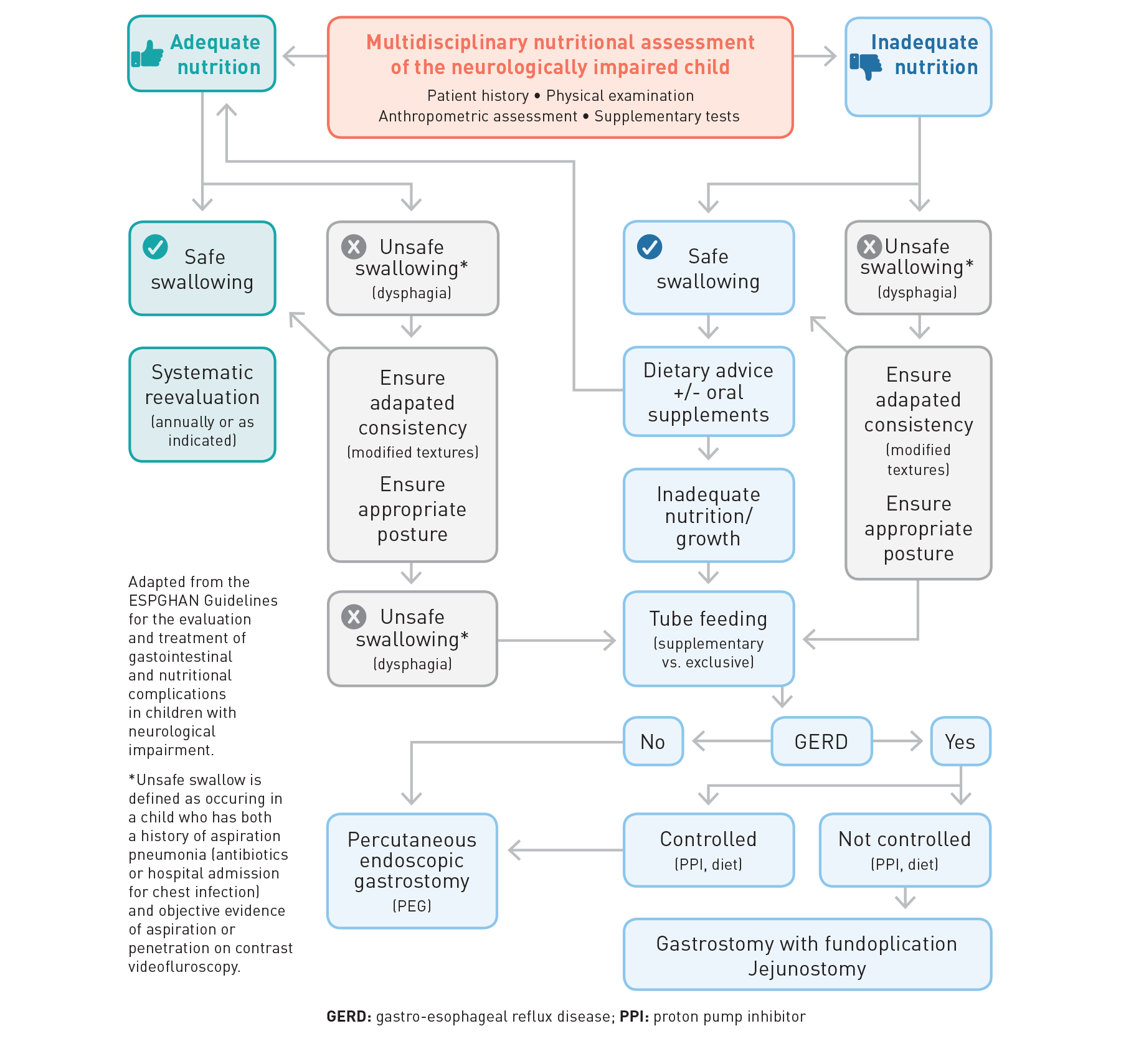Undernutrition is common in children with cerebral palsy (CP) and assessment of a child’s food and fluid intake is fundamental to developing a nutritional care plan.
There are different ways to assess a child’s intake, including a 3-day review of the child’s diet or a 24-hour recall.
Determining if your patient has feeding issues
Addressing feeding difficulties may prevent undernutrition, growth failure, micronutrient deficiencies, osteopenia, and nutritional comorbidities.1
Asking caregivers the following questions may help you better evaluate the situation:2
- Does feeding time take longer than 30 minutes?
- How would you describe mealtimes? Are mealtimes stressful for you and your child?
- Have you observed a lack of weight gain for the past 2–3 months, especially in the first 2 years of life?
- Does your child have a history of respiratory illnesses?
- Have you observed increased nasal congestion at meal times?
- Have you noticed a change in voice quality during meal times?
If possible, identify the specific feeding issues of your patient with CP by observing how your patient eats.
If you suspect the presence of swallowing difficulties, it would be preferable to have an assessment done by a local specialist multidisciplinary team with training in assessing and treating dysphagia. Your patient may be referred for further evaluation with a video fluoroscopic swallow study, also known as a modified barium swallow, or a fiberoptic endoscopic evaluation of swallowing (FEES) may be recommended.2,3

References:
- Romano C et al. European Society for Paediatric Gastroenterology, Hepatology and Nutrition Guidelines for the Evaluation and Treatment of Gastrointestinal and Nutritional Complications in Children with Neurological Impairment. J Pediatr Gastroenterol Nutr. 2017;65(2):242-264.
- Scarpato E et al. Nutritional assessment and intervention in children with cerebral palsy: a practical approach. Int J Food Sci Nutr. 2017;68(6):763-770.
- National Institute for Health and Care Excellence. Cerebral palsy in under 25s: assessment and management. Full Guideline. NG62. 2017. Accessed November 7, 2018 at: https://www.nice.org.uk/guidance/ng62/evidence/full-guideline-pdf-4357166226